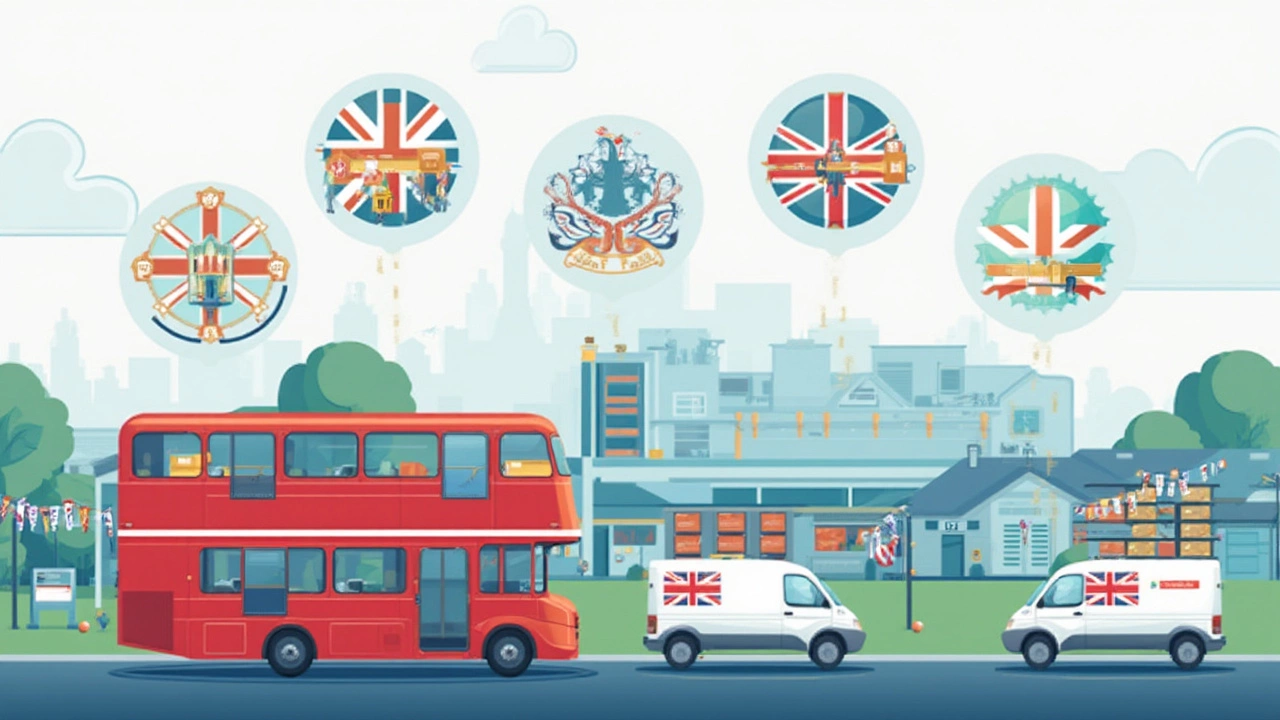Ever wonder how your online order zips from the warehouse to your front door in just a couple of days? It’s not magic—just a whole bunch of software running under the radar. Logistics software is the backbone of every shipment, delivery, and restock. Mess this up, and even the best product gets stuck on the shelf instead of in a cart.
If you’re managing anything from a small business to a global supply chain, getting a handle on these tools is more than just “nice to have.” It means keeping costs down, avoiding customer complaints, and actually sleeping at night. The secret isn’t using just one fancy app, but finding the right mix that fits your operation. Let’s get honest about what these systems do, how they connect, and how the big players use them to crush the chaos and keep things moving.
- Types of Logistics Software
- How These Systems Work Together
- Choosing the Right Tools
- Real-World Tips and Trends
Types of Logistics Software
If you stacked up every kind of logistics software companies actually use, you’d have a pretty tall pile. But to keep things clear, here are the core types you’ll find in nearly every operation worth its salt.
- Warehouse Management Systems (WMS): This software tracks every box, pallet, and product in your warehouse. WMS tools, like SAP EWM or Manhattan Associates, can show you what’s in stock, help you find it faster, and cut down on lost inventory. Some WMS solutions even connect with barcode scanners and robots on the floor.
- Transportation Management Systems (TMS): Organizing truck loads, mapping delivery routes, and managing freight rates are bread and butter for TMS. Think of hot names like Oracle Transportation Management or MercuryGate. These systems can automatically select the cheapest or fastest route and give real-time updates on where trucks are. TMS has almost become non-negotiable for anyone shipping at scale.
- Order Management Systems (OMS): If you’re running both online and offline sales, OMS keeps orders straight across every channel. It grabs data from your shopping site, sales reps, or email orders, then sends it to the warehouse or supplier. Shopify’s built-in OMS or NetSuite’s version are go-to options, especially in retail or e-commerce.
- Fleet Management Software: This one is all about keeping track of your vehicles. GPS tracking, fuel usage, maintenance reminders—it’s all here. Fleet Complete and Samsara are big in this space, especially for companies running their own trucks or vans every day.
- Enterprise Resource Planning (ERP): ERP is like the mothership, connecting logistics to everything else—accounting, HR, production, you name it. SAP and Microsoft Dynamics are leading examples. Many companies bolt their WMS and TMS right onto their ERP for smooth data flow.
Here’s a snapshot showing how companies are using these systems:
| Software Type | Popularity in Logistics Firms (2024) |
|---|---|
| Warehouse Management (WMS) | 87% |
| Transportation Management (TMS) | 81% |
| Order Management (OMS) | 68% |
| Fleet Management | 54% |
| ERP Integration | 58% |
Some companies still keep it old-school with spreadsheets, but that’s getting rare. As more businesses move online and customer patience gets shorter, there’s basically no way around adopting at least one of these core logistics tools to stay in the game.
How These Systems Work Together
Logistics runs smoother when its software systems talk to each other. Companies usually don’t rely on just one program, because each tool handles a different part of the puzzle. The real magic happens when you connect them, letting information flow seamlessly between, say, a warehouse system and a shipping app.
Take a basic flow: an order comes in, and your ERP (Enterprise Resource Planning) system records it. The Warehouse Management System (WMS) then finds the inventory and guides workers to pick and pack the right stuff. When the order is ready, the Transportation Management System (TMS) gets notified, chooses the best carrier, and arranges shipping. Updates go back to the ERP and out to the customer, so everyone knows what’s happening. Keeping systems in sync means you avoid nasty surprises—like shipping something that isn’t actually in stock.
Here’s what that might look like in practice:
- Logistics software like WMS tracks every product on a shelf, in a bin, or on a truck.
- The TMS checks shipment details, quotes rates, and books transport—all without manual emails or calls.
- The ERP acts as command central, pulling together sales, inventory, and finance, so you see the big picture instantly.
- Some companies add last-mile delivery tools for real-time tracking and proof-of-delivery on your phone.
Tightly-knit systems save real money. For example, companies using connected WMS and TMS platforms have seen order processing times drop by up to 30%. Less manual work means fewer mistakes—which means fewer upset customers.
| System | Main Function | Works With |
|---|---|---|
| ERP | Handles finance, orders, inventory | WMS, TMS, CRM |
| WMS | Manages storage, picking, packing | ERP, TMS |
| TMS | Plans routes, books shipping | ERP, WMS |
| Last Mile App | Manages delivery to customer | TMS, Customer Apps |
If these systems aren’t connected, you’ll spend hours copying data between programs or, worse, fixing mistakes that slipped through the cracks. Integration might sound technical, but it pays off big when everything finally clicks together—the difference between chaos and control.

Choosing the Right Tools
If you’re just picking logistics software because it’s popular, you’ll hit roadblocks fast. Not every solution fits every business. The trick is to match your real operations with what the software actually does—not just what the sales rep promises.
Start by listing out what you really need. Do you ship small parcels, pallets, or massive loads? Need real-time tracking? Handling returns every day? Make a list. The basics sound like a no-brainer, but you’d be amazed how many companies forget to factor in customer support or integrations with their store or accounting software.
Here’s a practical way to zero in on the right fit:
- Logistics software types: Know your categories—WMS (warehouse management system), TMS (transportation management system), ERP (enterprise resource planning), and OMS (order management system). Each covers a chunk of your process.
- Scalability: Can the system handle you now and when you double in size? Big retailers like Walmart or Amazon go for software that won’t choke as they grow.
- Integration: Make sure your software works with what you already use—your e-commerce platform, CRM, and even that old barcode scanner in the back.
- User-friendliness: If your team hates using it, nobody will. Simple interfaces win over flashy dashboards any day.
- Support and training: You’ll need both, especially right after launch. Some vendors offer 24/7 phone help; others drop you with a FAQ and call it a day.
Don’t skip the demo or trial period. Get your team to try out real tasks. Can you create a shipment, track an order, or update inventory in under five clicks?
Fact: According to a 2024 SHD research report, over 70% of failed logistics software projects come from skipping the needs assessment phase. That’s a lot of wasted cash and time.
If your operation is complicated—say, multiple warehouses or international shipping—look for a system with strong customization and robust compliance tools. Otherwise, you’ll spend more time fighting errors than shipping products.
Real-World Tips and Trends
Buying shiny new tech sounds cool, but here’s the deal: logistics software decisions can make or break your operation. If you go too cheap, you end up stuck with clunky dashboards and problems no one can fix. Go too fancy, and you might overpay for stuff you’ll never use. So what's actually working right now?
Companies are teaming up their logistics software tools. Warehouse Management Systems (WMS), Transportation Management Systems (TMS), and order tracking apps are getting connected, so data doesn’t get lost from screen to screen. About 80% of companies that combine these tools say they've cut shipping errors and inventory headaches, according to a late 2024 survey by Logistics Bureau.
Here are a few tips if you want to stay ahead of the curve:
- Go cloud-first: Cloud-based platforms are winning because they’re easy to access from anywhere. No more panicking when someone is out of the office—everyone stays in the loop.
- Automate what makes sense: Simple stuff like automated order picking, load planning, and real-time shipment tracking are low-hanging fruit. Plugging in these automated features cuts down on phone calls and human mistakes.
- Check for integrations: Make sure your systems talk to each other. Do a quick test before buying any new tool—ask for a demo that shows real data moving between platforms. This avoids nightmare spreadsheets later.
- Think about data: The real value shows up in the numbers. Some newer logistics systems offer dashboards that spot trends, flag problems, and even suggest fixes on the fly.
One interesting shift in 2025: smaller businesses are picking up the same software used by big players—but as subscription services. You don't have to drop a fortune upfront, and you can bail if it doesn't work out. That’s opened the door for startups to get serious about efficiency from day one.
Here's a quick look at features companies are demanding most:
| Feature | % of Companies Using in 2025 |
|---|---|
| Real-time Shipment Tracking | 82% |
| Automated Invoicing | 68% |
| Integrated WMS & TMS | 74% |
| Cloud-Based Access | 87% |
If you’re still running things with email and spreadsheets, this is a wake-up call. Even a single digital upgrade can keep cargo moving smoother and customers happier.


